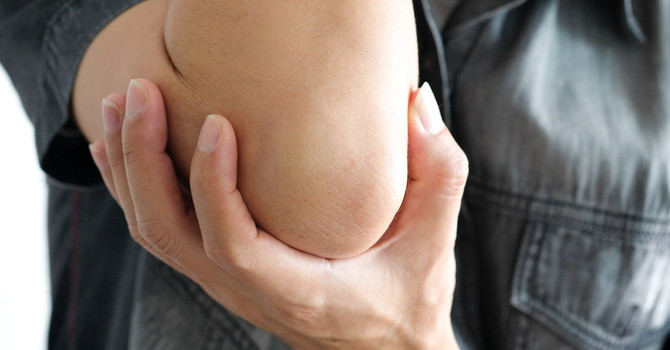
It’s no secret that exercise is an incredibly useful tool for long-term health and is protective against chronic disease. However, when does exercise start to become detrimental to our health and bodies?
Most content regarding exercises pertains to becoming more aesthetically pleasing and becoming more muscular and toned. This content is great if individuals are only concerned about getting more muscular or looking better. However, is gaining those six-pack abs and getting those large defined shoulders worth the preceding injuries if the wrong exercises are chosen. Is it possible to build and tone muscles without sacrificing the long-term health of your joints, and body?
The answer is yes! This article will describe what exercises the typical weightlifter should avoid, and what exercise can be used instead to get still the results you desire.
Upper Body Exercises that are potentially dangerous for the upper body. “Potentially” is a key word here.
The Overhead Press
The shoulder is a joint that is extremely susceptible to injury. One movement, in particular, can be detrimental to the shoulder is overhead pressing movements. The reason that overhead pressing movements are potentially dangerous is that when an individual presses their arms overhead it can cause impingement or pressure on a fluid-filled sac called a bursa. There are many of these bursa’s located throughout the body, but there is one located on the shoulder blade or scapula that is particularly prone to irritation. This bursa is located underneath a structure called the acromion.
Doing exercises such as overhead presses repetitively over time can cause what is called, “subacromial bursitis,” or in laymen’s terms, pressure on a fluid-filled sac underneath the acromion. Another reason why the overhead press performed excessively overtime can be potentially dangerous is because of what it does to the anatomy of the body. When an individual does an overhead press, it works the anterior deltoid. If the anterior deltoid is overly developed, it will cause the classic “rounded shoulder appearance” that will cause impingement of the shoulder.
Most weightlifters will often work out the large outside muscles (such as the deltoid), and pay very little attention to the muscles that are involved with shoulder stabilization such as the rotator cuff muscles and scapular stabilizers.
Exercises that are Potentially Dangerous for the Lower Back
Back Extensions
The back extension exercise is an exercise that is done to strengthen the lower back muscles. While the idea of this seems solid, the logic of it is not. When an individual does this exercise, they tend to hyperextend their back. Doing this will cause the weightlifter to, “jam” or put pressure on structures of their spine called the facet joints. If the individual does this for long periods of time, this will irritate these facet joints, and eventually cause lower back pain. This is a big deal because according to statistics, 80%-90% of healthcare expenditure is spent on chronic back pain.
Instead, try doing an exercise called the deadlift using what is called a hex bar. The hex bar or trap bar is much safer to use as opposed to a deadlift bar because it places less stress on the spine. The traditional deadlift with a barbell causes individuals to resist flexion too much with their lower back. This is because with traditional deadlifts done with a barbell the weight is placed in front of an individual. The way the hex bar works is you step inside of it instead of standing behind it. This allows the individual to lift the weight in a way that allows the individual to use their legs, hips, and back muscles.
Sit-ups and Crunches
When people think of getting strong, well-defined abs, people generally only pay attention to the core muscles in the front of the body. These muscles include the rectus abdominis and the external obliques. Instead, individuals should opt for developing the entire core. The muscles that make up your core are not only the muscles located on the front of the body and sides but also the back, posterior chain.
An exercise/exercises that primarily only target the “front” abdominal muscles that are potentially dangerous are sit-ups and crunches. These exercises are very good at creating stronger more toned abdominals. They also are effective for getting those six-pack abs, however, doing these exercises for an extended period is a quick way to hurt your lower back. Doing these exercises causes too much lower back compression, and increased pressure on the spinal disks which can cause disk herniations.
Another reason why they are potentially dangerous is that they cause for a lot of recruitment of the hip flexors. The problem with hip flexors that are excessively tight is that they tug on the lower back causing lower back discomfort. Having these tight hip flexors will cause a forward or anterior hip tilt which causes the muscles opposite it (the gluteal muscles) to be turned off. These gluteal muscles are very important in spine health and stabilization.
Instead, individuals should opt for planks. Doing planks will help the individual recruit all of the muscles of the core, not just the front ones. During the plank, the individual while rest with their elbows on the ground with their hands out in front of them. The elbows directly below the shoulders. They will also try to create a flat line with the body from the heels to their head without any excessive drooping or dropping off their lower body. Individuals should try starting off by trying to hold their bodies in this position for 30 seconds.
Back Stretches
This exercise may come as a shock to a lot of people. Wouldn’t you want to stretch the lower back to loosen it up? There are a time and a place to loosen up lower back musculature. However, individuals should try, and get this done by a trained professional who specializes in what in what is called, “myofascial release technique.”
The reason that people should not do a lot of lower back stretches is that that is not the function of the lower back. There is a theory called the joint by a joint approach which is stressed by a physical therapist named Grey Cook. Essentially these two functions to joints. They are either meant to be stable (less mobile) or mobile (less stable).
The lower back is meant to be a stable joint, and the joints above (the thoracic spine) and the joints below (the hip joints) are meant to be mobile. Doing lower back exercises will cause the lower back to become too unstable if done for a long period.
Russian Twists with Medicine Balls
The Russian twist is an exercise that is utilized by many weightlifters to target the abdominals and obliques. Much like sit-ups and crunches, this is a decent exercise if an individual is trying to strengthen and get defined abs/obliques. For those who may not know, this exercise puts an individual in forty-five degrees of flexion of the upper body, and the individual will twist their upper body side to side touching the floor on each side. The reason that this exercise is so dangerous is that when the upper body is unsupported, the lower back has to do most of the work to support it.
The other reason it is so dangerous is that the lower back anatomically is only able to rotate ten to fifteen degrees. Making this motion of rotation with a flexed spine inc
orporates the same mechanism of injury as disk herniation injuries. In fact according to the Mayo Clinic, patients who have occupations or do a lot of activities that involve a flexed trunk and twisting, are at the highest risk of disk herniation injuries. Instead, individuals should try doing a side plank. This exercise will help target the obliques as well as avoiding the unnecessary spinal flexion, and rotation.
In the end, exercise should be something that enhances our health not hurts it. Exercise is a wonderful tool that can help improve mental clarity, increase energy, increase strength and increase endurance. Everyone wants to look better, and exercise is a great tool to do that. However, caution needs to be taken when picking particular exercises. Exercise selection should be chosen to enhance the muscles without sacrificing the joints.

Works Cited
Alexander, C. E., & Dulebohn, S. E. (n.d.). Figure 2f from Irimia R, Gottschling M (2016) Taxonomic revision of Rochefortia Sw. (Ehretiaceae, Boraginales). Biodiversity Data Journal 4: E7720. https://doi.org/10.3897/BDJ.4.e7720. Lumbosacral Facet Syndrome. doi:10.3897/bdj.4.e7720.figure2f



